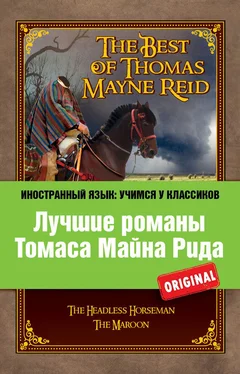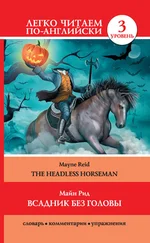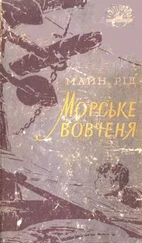28
a Creole– in the old French or Spanish states in the south of the USA, a person of pure European or mixed European origin; descendants of the French and Spanish settlers
29
penates– home, household; in Roman mythology, Penates were household gods who protected the house
30
Erebus – in Greek mythology, Erebus (Darkness) is the offspring of Chaos (the Greek for Abyss )
31
gramineae– grass
32
algarobias – a kind of wood species
33
mezquites – a name of a bush with thorns
34
Fort Inge – a settlement built in 1849 on the eastern bank of the Leona River, 135 kilometres south-west of San Antonio
35
lazo– lasso – a long rope used for catching horses and cattle
36
ranchero– rancher ( Spanish )
37
calzoneros– trousers ( Spanish )
38
calzoncillos– men’s underwear ( Spanish )
39
botas– boots ( Spanish )
40
Moorish – related to the Moors, a population of medieval Spain and Portugal of Moroccan, Algerian or Berber origin; the Moorish style is typical for architecture and decorative art of medieval Spain
41
the Conquistadores – participants of the Spanish conquest of America in the 16th century
42
cavallero – a nobleman; originally: a cavalry man, a military man on horseback
43
mustangs – North American wild horses; they descended from Spanish horses brought to America in the 16th century. Tamed mustangs are known for their speed and strength
44
a Jack – a common man, a plebeian
45
a tête-à-tête – a private meeting of two persons
46
piccaninny – (US) a small child; an African baby
47
Lucifer – in Greek and Roman mythology, the Lightbearer – the morning star, symbol of dawn; in Christianity, the name of Satan before his fall
48
Tartarus – in Greek mythology, the deepest part of the underworld
49
Pluto – in Greek mythology and religion, the son of Cronus, and brother of Zeus; he ruled the underworld, the dark land of the dead
50
Proserpineor Persephone – in Greek mythology and religion, the wife of Pluto, king of the underworld
51
hullabalooing – making a lot of noise about smth; expressing excitement
52
ambuscade= ambush – an unexpected attack from a hidden place
53
lorgnette= binoculars, field-glasses ( French )
54
ghouls – in Arabic folklore, demonic spirits who inhabit cemeteries and deserted places
55
ogres – in fairy-tales, giants eating human beings
56
Titans – in Greek mythology, the children of Uranius (Heaven) and Gaea (Earth)
57
Bacchus – in Greek mythology and religion, the god of vegetation, better known as the god of wine and ecstasy; in Roman mythology this god is known as Dionysus
58
musketry – from musket – a firearm of the 16th–18th centuries; in the 19th century it was replaced by a rifle
59
crape – black silk or cotton material
60
sombrero – a broad-brimmed Spanish or Mexican hat made of straw or felt
61
Cimmerian – related to the Cimmerians , the ancient people of unknown origin who lived north of the Caucasus till the 8th century BC; later they were driven by the Scythians to Anatolia
62
Aeolus – in Greek mythology, the god of wind
63
the Rio Grande – the river in North America; it forms the border between Texas and Mexico. The river starts in the Rocky Mountains and flows to the Gulf of Mexico
64
mustanger – a man who catches, tames and sells mustangs
65
Satan – the prince of evil forces, the enemy of God; he is also identified with the devil
66
Mon Dieu!= My God! ( French )
67
the Rio de Nueces – the Nueces River in Texas and Mexico
68
Fouquiera splendens – ocotillo, or wine cactus, a flowering shrub which grows in Texas, California and Mexico
69
Lipano – the Lipan people – the Indian nomad tribe of western Texas
70
Comanche – North American Indian tribe of the Great Plains; they were skilled horsemen and led a nomadic life
71
Rangers – in the USA, soldiers, trained to make rapid attacks on the enemy territory; in Texas, Rangers were formed into regiments and used in federal service as law-enforcement forces
72
moccasin – a shoe of soft leather worn by North American Indians, hunters and traders; also a common name of Agkistrodon vipers
73
tarantula – a poisonous spider
74
centipede – a long, many-segmented insect; each segment has one pair of legs
75
the Alamo – one of the tributaries of the Nueces River; also the old chapel of the Franciscan mission, founded in 1716–1718, the place of the historic resistance of fighters for the independence of Texas from Mexico
76
papeterie– a set of writing materials ( French )
77
portmanteau – a suitcase consisting of two parts that fold together
78
demijohn – a large glass wine bottle
79
corduroy – a durable fabric, used for breeches, coats, jackets and trousers
80
calico – a cotton fabric with simple designs; it first appeared in the 11th century in Calicut, India
81
brogues – strong leather shoes with stitches
82
Milesian – related to Milesians , the ancestors of the Celtic population of Ireland
83
Galway – a county in western Ireland, the largest Gaelic-speaking region of the country; a seaport and the county town of County Galway
84
Connemara – a region in County Galway, a lowland with bogs, lakes and uplands
85
manada– herd of horses ( Spanish )
86
ci-devant– 1. former; 2. before ( French )
87
Howly Vargin– Holy Virgin, Mother of Jesus
88
Saint Patrick – bishop and patron saint of Ireland, national apostle who brought Christianity to the country in the 5th century
89
Yankees – citizens of the USA, or more precisely of the six New England states; the origin of the word is unknown; it came into use during the Civil War in 1861–1865
90
Galwegian – inhabitant of Galway
91
grog – an alcoholic drink mixed with water
92
Nothing in his tout ensemblemeans nothing in his cloths
93
métier– profession, occupation, business ( French )
94
Orleens– New Orleans – the largest city and port on the Mississippi River, founded in 1718 by the French settlers; in 1763 New Orleans was given to the Spanish government, but in 1803 it was returned to France. In the same year Napoleon sold it to the United States
Читать дальше
Конец ознакомительного отрывка
Купить книгу











